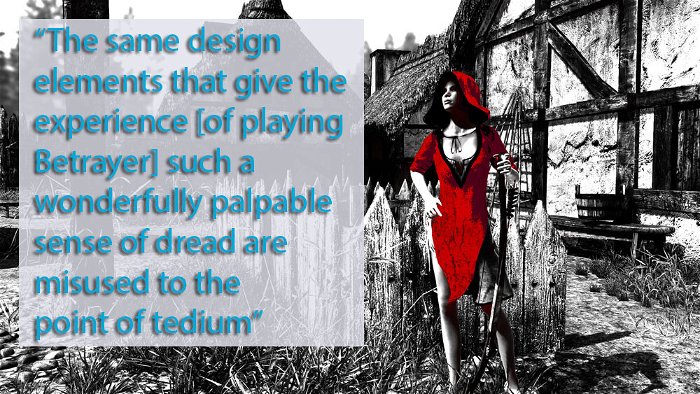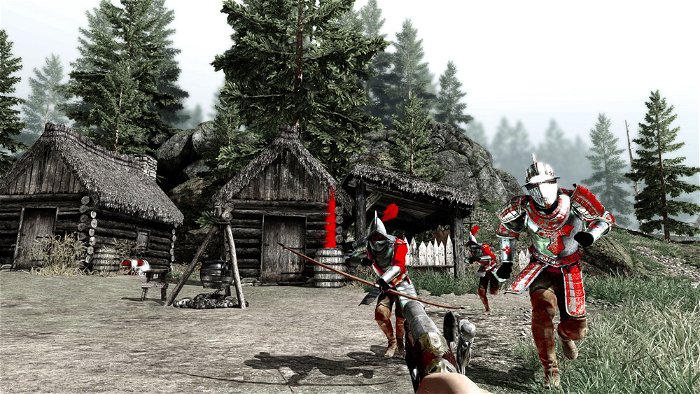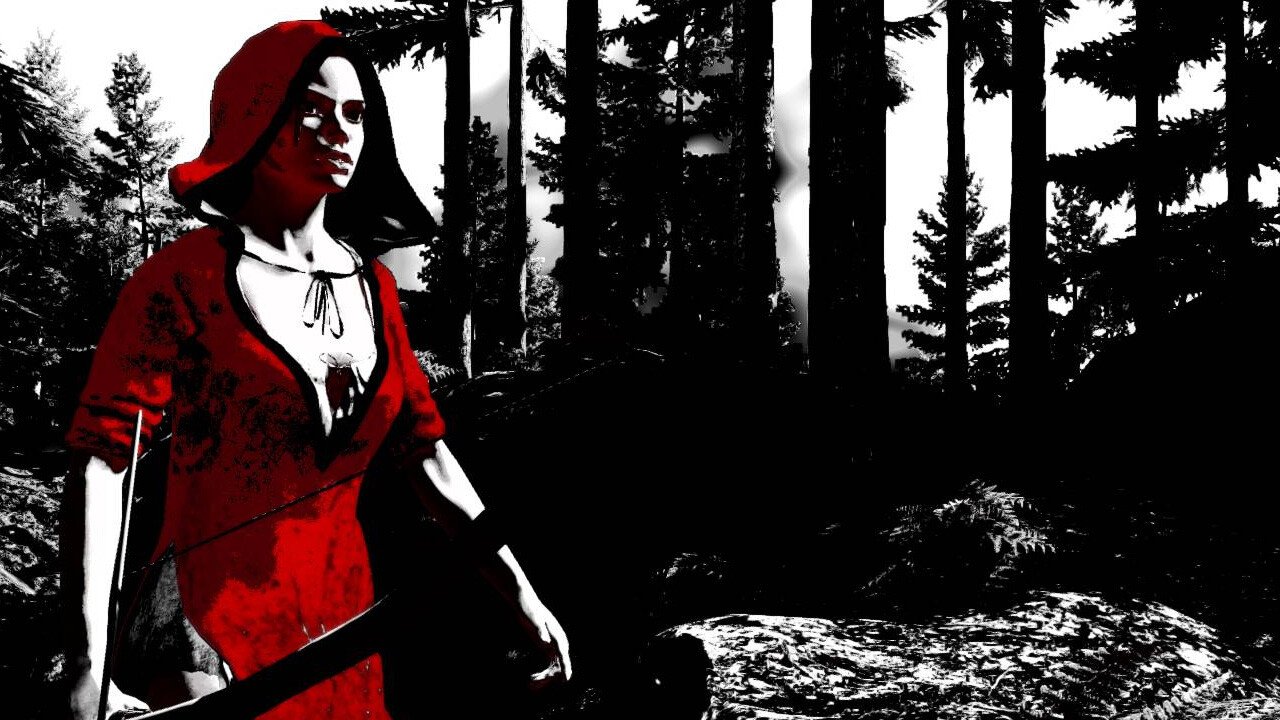If the most effective horror stories are about confronting our fear of the unknown, then there are very few premises better set up to scare us than the one found in Blackpowder Games’ Betrayer. After washing ashore on the banks of a Virginian colony in 1604, the game’s protagonist discovers that none of the area’s dense forests and remote outposts are still inhabited, save for a single red-cloaked woman. What is left are wandering demons decked out in 17th century Spanish armour and the ghosts of the annihilated Natives and English colonists. Aside from this rather creepy company the player is completely alone in the desolate woods and ruined colonial forts.
That Betrayer is a game about isolation, and survival is established immediately and then hammered home by the extreme vulnerability of its main character. Armed only with salvaged bows, tomahawks, and slow-loading firearms, the player is tasked with uncovering exactly what lead to the desolation of the remote colony while being constantly attacked by the roaming ghosts of the settlement. Betrayer‘s greatest strength is the efficacy with which it establishes a sense of powerlessness, loneliness, and confusion. It is presented wonderfully, the landscape portrayed in an ominous black and white occasionally accented with blood red objects and its audio mixing the natural sounds of wind rushing through leaves with the moaning of violent creatures.

This aesthetic partners with the immensity of the landscape and the constant danger of potentially fatal ambush to make exploring the colony fairly nerve wracking. The sense of despair is furthered still by a mission structure that sees quests unlocked and completed by finding and speaking to the shadowy apparitions haunting Virginia. Aside from brief conversations with the woman in red, there is nothing but death and danger left in the world. Every footstep through the brush and every newly discovered landmark is dripping with menace, providing Betrayer with a memorably oppressive atmosphere.
Unfortunately, those elements of the game that contribute so much to its success are often the same ones that make Betrayer frustrating. While the sprawling forests may look fantastic, the lack of colour and overly vague objectives make figuring out what to do next more confusing than it ought to be. Finding the next clue, ghost, or landmark is meant to be done entirely by listening to audio cues. Players are asked to pay close attention to the volume of spooky noises emanating from the direction they’re heading in—the louder the sound the closer they are to discovering something new. In theory, this is an excellent method of increasing a horror game’s tension, but in practice it ends being extremely disorienting. Activating an optional visual aid from the menu helps minimize this problem, but it doesn’t do much to compensate for the generally ambiguous goals that characterize Betrayer‘s overall progression structure.
Even when the player has found their next objective, they’ll still need to contend with a punishing combat system that—while based around unique and responsive weapon designs— sees enemies being able to take them down in just a few hits. The ideal way to counter this is to be as quiet as possible, slowly sneaking through groups of enemies to pick them off one by one. Unfortunately, stronger monsters require several shots to dispatch and firing a single silent arrow shot will cause them to roar, rush forward, and alert every other hostile creature in the area. Since stealth is rarely a viable option, the best approach is to run around the undead soldiers, ghosts, and skeletons in circles and take the occasional pot-shot until they’re beat. Instead of the protagonist’s fragility and the creatures’ strength adding tension to the game they end up encouraging hyperactive combat scenarios that end up being a lot funnier than they are scary. In this case, as in others, the same design elements that give the experience such a wonderfully palpable sense of dread are misused to the point of tedium.

If it wasn’t for Betrayer‘s compelling narrative, great premise, and well realized atmosphere it would be difficult to find much that warrants attention. These parts of the game that are successfully executed are well worth experiencing, though. Those who are willing to put up with often frustrating combat and structural design will find a macabre and interesting story, beautifully presented, in Betrayer. It’s just too bad that it isn’t a bit more enjoyable to experience it.





